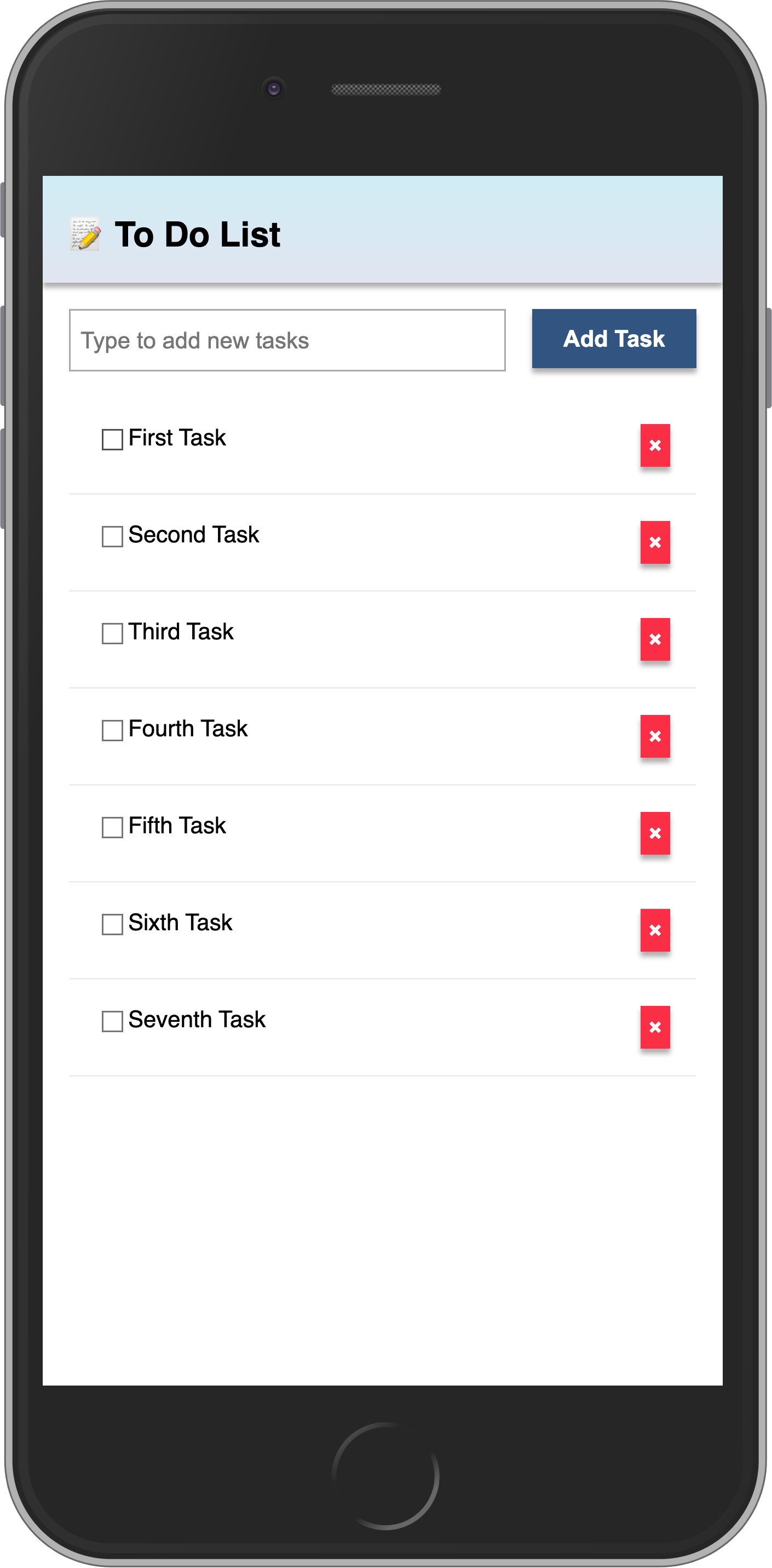5: Styles
5.1: CSS
Our user interface up until this point has looked quite ugly. Let’s add some basic styling which will serve as the foundation for a more professional looking app.
Replace the content of our client/main.css file with the one below, the idea is to have an app bar in the top, and a scrollable content including:
- form to add new tasks;
- list of tasks.
client/main.css
body {
font-family: sans-serif;
background-color: #315481;
background-image: linear-gradient(to bottom, #315481, #918e82 100%);
background-attachment: fixed;
position: absolute;
top: 0;
bottom: 0;
left: 0;
right: 0;
padding: 0;
margin: 0;
font-size: 14px;
}
button {
font-weight: bold;
font-size: 1em;
border: none;
color: white;
box-shadow: 0 3px 3px rgba(34, 25, 25, 0.4);
padding: 5px;
cursor: pointer;
}
button:focus {
outline: 0;
}
.app {
display: flex;
flex-direction: column;
height: 100vh;
}
.app-header {
flex-grow: 1;
white-space: nowrap;
overflow: hidden;
text-overflow: ellipsis;
}
.main {
display: flex;
flex-direction: column;
flex-grow: 1;
overflow: auto;
background: white;
}
.main::-webkit-scrollbar {
width: 0;
height: 0;
background: inherit;
}
header {
background: #d2edf4;
background-image: linear-gradient(to bottom, #d0edf5, #e1e5f0 100%);
padding: 20px 15px 15px 15px;
position: relative;
box-shadow: 0 3px 3px rgba(34, 25, 25, 0.4);
}
.app-bar {
display: flex;
justify-content: space-between;
}
.app-bar h1 {
font-size: 1.5em;
margin: 0 1em 0 0;
display: inline-block;
}
.task-form {
display: flex;
margin: 16px;
}
.task-form > input {
flex-grow: 1;
box-sizing: border-box;
padding: 10px 6px;
background: transparent;
border: 1px solid #aaa;
width: 100%;
font-size: 1em;
margin-right: 16px;
}
.task-form > input:focus {
outline: 0;
}
.task-form > button {
min-width: 100px;
height: 95%;
background-color: #315481;
}
.tasks {
list-style-type: none;
padding-inline-start: 0;
padding-left: 16px;
padding-right: 16px;
margin-block-start: 0;
margin-block-end: 0;
}
.task {
display: flex;
padding: 16px;
border-bottom: #eee solid 1px;
}
.task > span {
flex-grow: 1;
}
.task > button {
justify-self: flex-end;
background-color: #ff3046;
}
If you want to learn more about this stylesheet check this article about Flexbox, and also this free video tutorial about it from Wes Bos.
Flexbox is an excellent tool to distribute and align elements in your UI.
5.2: Applying styles
Now you need to add some elements around your components. You are going to add a className to your main div in the App, also a header element with a few divs around your h1, and a main div around your form and list. Check below how it should be, pay attention to the name of the classes, they need to be the same as in the CSS file:
imports/ui/App.vue
<template>
<div class="app">
<header>
<div className="app-bar">
<div className="app-header">
<h1>Todo List</h1>
</div>
</div>
</header>
<div class="main">
<TaskForm />
<ul class="tasks">
<Task
class="task"
v-for="task in tasks"
v-bind:key="task._id"
v-bind:task="task"
/>
</ul>
</div>
</div>
</template>
..
Also choose a better title for your app, Meteor is amazing, but you don’t want to see Todo List in your app top bar all the time.
You could choose something like:
imports/ui/App.jsx
..
<h1>📝️ To Do List</h1>
..
Your app should look like this:

Review: you can check how your code should be in the end of this step here
In the next step we are going to make this task list more interactive, for example, providing a way to filter tasks.
